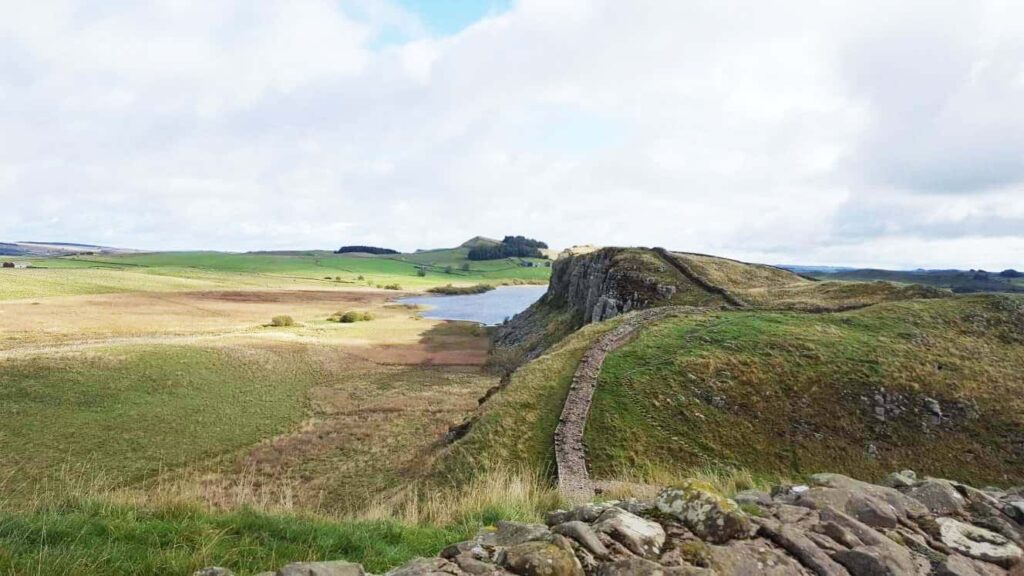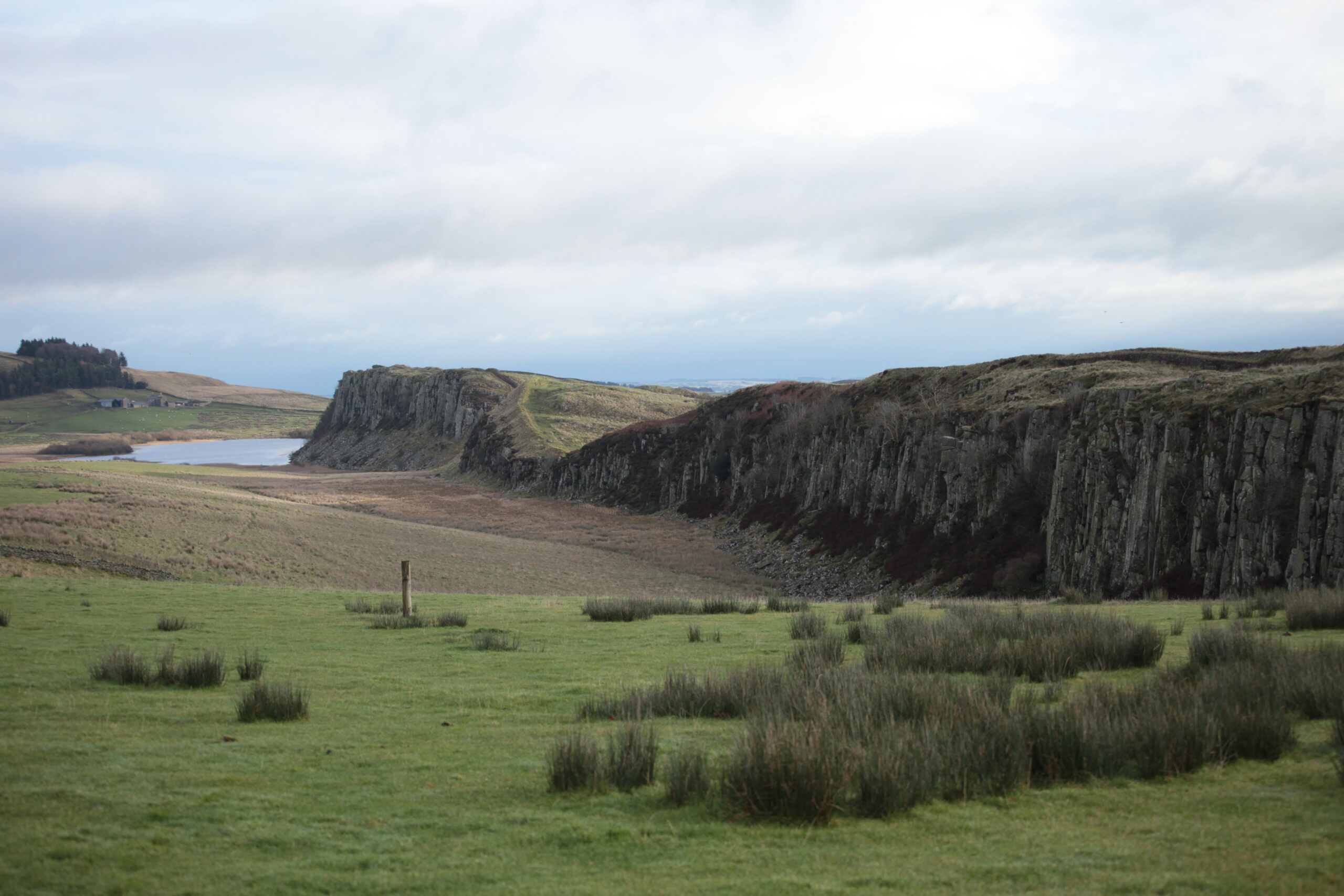Hadrian’s Wall is situated in the North East of England in Northumberland National Park. This blog is the beginning of a new series of blogs all about the Wall.

The blogs are written in the same style as I would plan a guided tour to explore the knowledge and stories I love about the area around Hadrian’s Wall, enabling you to find out some of the facts and stories for yourself.
Throughout the series, I’ll show parts of Hadrian’s Wall, how it was constructed, some of the forts along the Wall, some of the civilian sites and the religious sites across the Wall. This series will give you a sense of what it was like to be around the vicinity of Hadrian’s Wall between 1,900 and 600 years ago. I’ll talk about how Hadrian’s Wall was built and how it changed over the course of time.
First of all, let’s talk about the Wall before the Wall!
The Wall Before the Wall
The Whin Sill in Northumberland forms a part of Hadrian’s Wall. The Whin Sill is an amazing geological feature. That’s because 295 million years ago during the carboniferous period, red hot magma forced its way up through the tectonic plates and cooled to form the Whinstone. In Northumbrian, Whin means ‘hard, dark rock’. The stone formed into the Whin Sill – sill being another word for cliff.
As the Whinstone cooled it remained under the ground for a long time until the last Ice Age. During that time, cooling and warming occurred intermittently, wearing down the land like a scouring brush. As it wore down the land, natural divots, hills and mountains were revealed all over Britain, Europe and the rest of the world. The landscape of Northumberland was formed as a result.
As the ice retreated between 12,000 and 10,000 BC the land was revealed. The landscape would be familiar to Stone Age hunter-gatherers, European farmers and the Ancient Britons who migrated into the country and started living here. The landscape stayed the same until the Romans arrived and chose the Whin Sill as a feature to build Hadrian’s Wall on top. It formed a natural wall itself. Add the Roman Wall on top and it would have had a huge effect on the local Britons.

Archaeologists are now finding evidence that it was either painted, plastered or whitewashed. That means there would be a 4-6m barrier along the top of the Whin Sill which would have been visible for miles around. This would have prevented the Ancient Britons from moving around land their ancestors would have had easy access to.

Whinstone has been the foundation for many other things across the North East of England. Lindisfarne Castle and Bamburgh Castle, for example, were both built on top of Whinstone. High Force at Barnard Castle also flows over Whinstone.
There’s an urban myth that I love about the meaning of the word Whin. The stone was often quarried to make roads and other constructions, and when it was hit with a pick axe, it would make a ‘whin’ sound, hence the name. This myth has never been proved wrong so it’s a little story I love to tell during my tours.
Check out the video to go with this blog and I’ll write more blogs soon.



